*NURSING > QUESTIONS & ANSWERS > TestBank Phato3 nursing questions and answers 2020/2021 (All)
TestBank Phato3 nursing questions and answers 2020/2021
Document Content and Description Below
. Which of the following cells produce new bone? a. Osteocytes b. Osteoblasts c. Osteoclasts d. Stem cells from the bone marrow ANS: B REF: 159 2. What is the chemical transmitter released at th... e neuromuscular junction? a. Norepinephrine b. GABA c. Serotonin d. Acetylcholine ANS: D REF: 161 3. What are the two types of bone tissue? a. Vascular and nonvascular b. Spongy and calcified c. Compact and cancellous d. Dense and pliable ANS: C REF: 159 4. Which of the following would identify an open or compound fracture? a. The skin and soft tissue are exposed at the fracture site. b. A bone is crushed into many small pieces. c. The bone appears bent with a partial fracture line. d. One end of a bone is forced into an adjacent bone. ANS: A REF: 164 5. Which of the following describes a Colles’ fracture? a. The distal radius is broken. b. The distal fibula is broken. c. A vertebra appears crushed. d. A spontaneous fracture occurs in weakened bone. ANS: A REF: 165 6. During the fracture healing process, the hematoma: a. is broken down and absorbed immediately. b. provides the base for bone cells to produce new bone. c. is the structure into which granulation tissue grows. d. produces fibroblasts to lay down new cartilage. ANS: C REF: 166 7. When a fracture is healing, the procallus or fibrocartilaginous callus: a. can bear weight. b. serves as a splint across the fracture site. c. is the tissue that lays down new cartilage. d. is made up of new bone. ANS: B REF: 166 8. The inflammation surrounding a fracture site during the first few days may complicate healing by causing: a. excessive bone movement. b. severe ischemia and tissue necrosis. c. malunion or nonunion. d. fat emboli to form. ANS: B REF: 166167 9. What is a sign of a dislocation? a. Crepitus b. Pain and tenderness c. Increased range of motion at a joint d. Deformity at a joint ANS: D REF: 168 10. All of the following predispose to osteoporosis EXCEPT: a. weightbearing activity. b. a sedentary lifestyle. c. longterm intake of glucocorticoids. d. calcium deficit. [Show More]
Last updated: 1 year ago
Preview 1 out of 131 pages
Instant download
.png)
Buy this document to get the full access instantly
Instant Download Access after purchase
Add to cartInstant download
Reviews( 0 )
Document information
Connected school, study & course
About the document
Uploaded On
Jul 01, 2022
Number of pages
131
Written in
Additional information
This document has been written for:
Uploaded
Jul 01, 2022
Downloads
0
Views
35

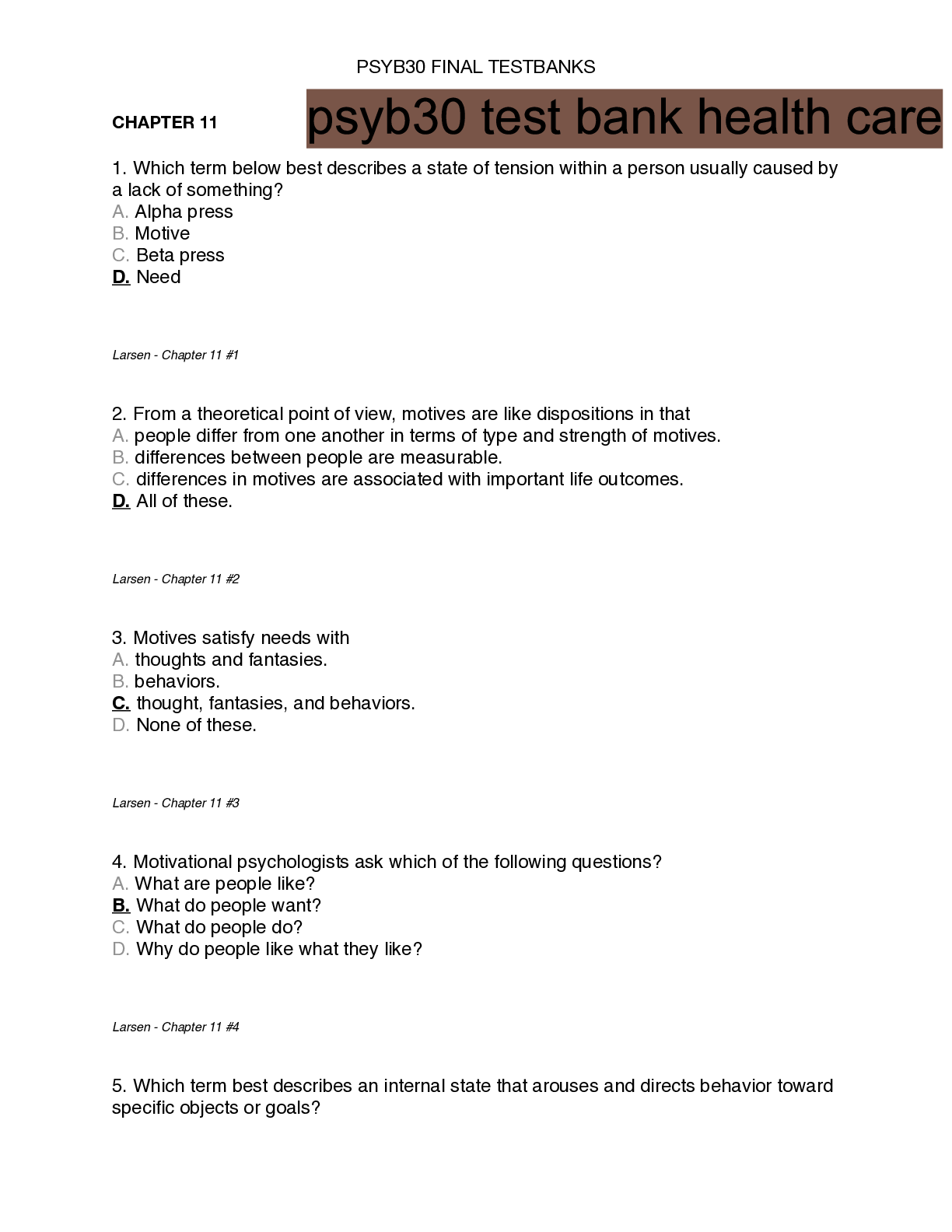

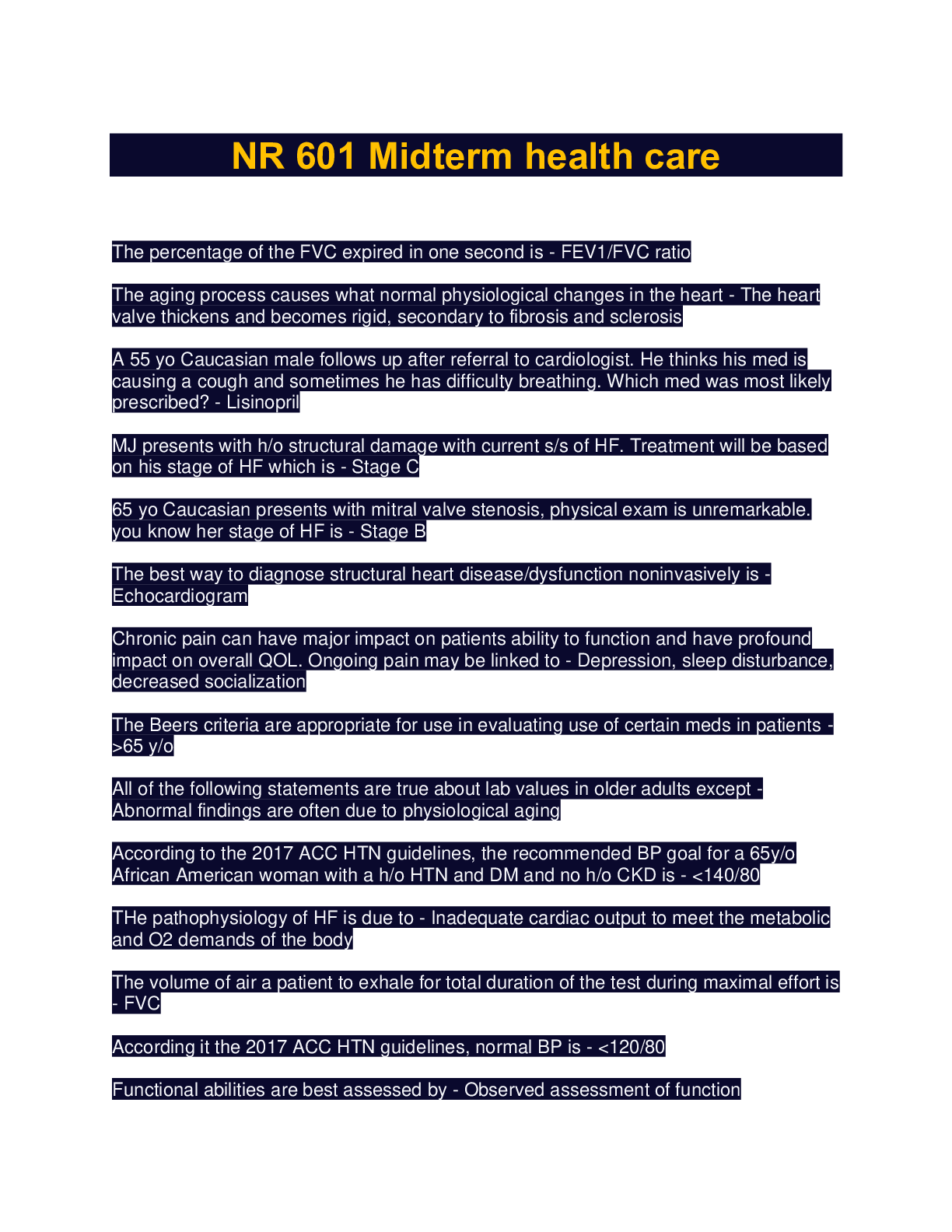
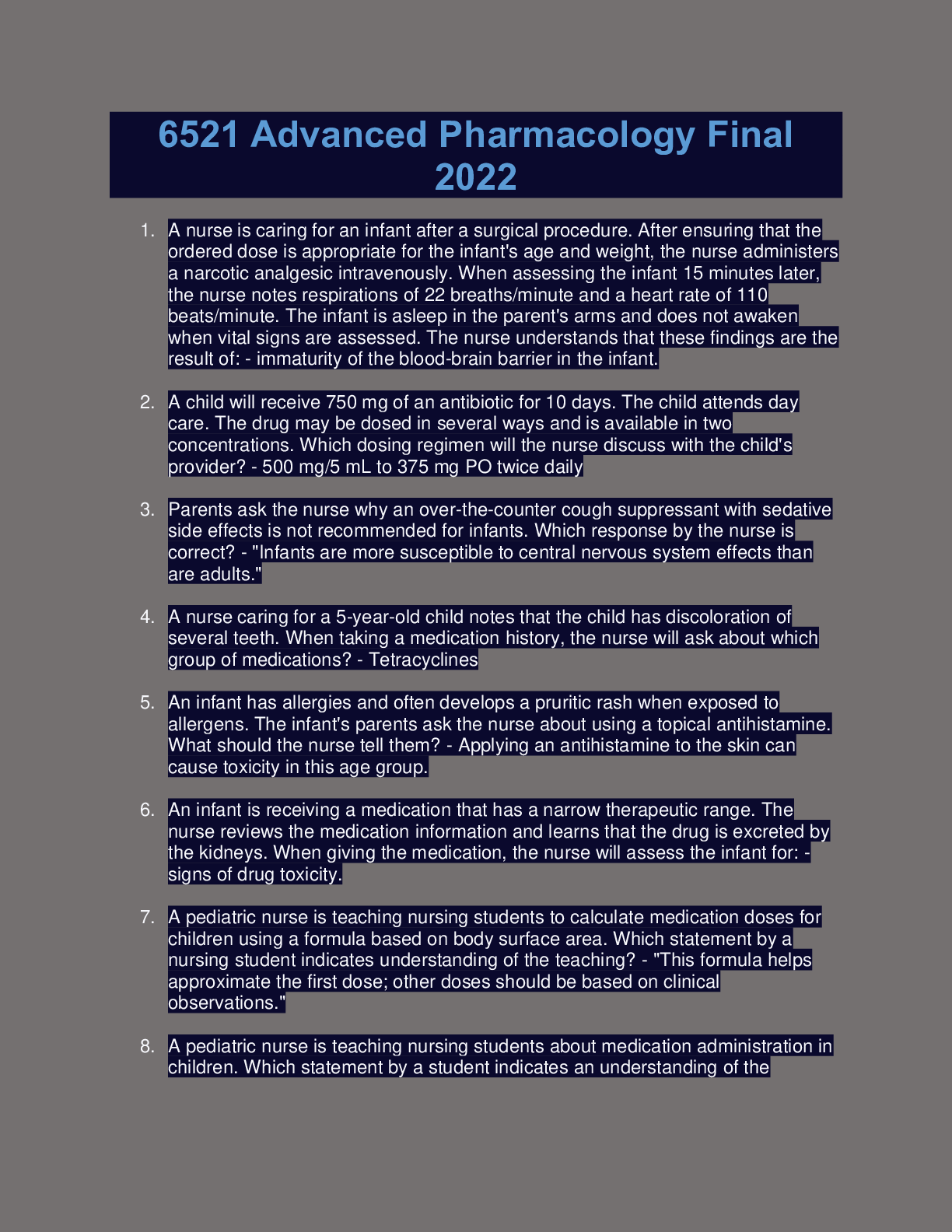





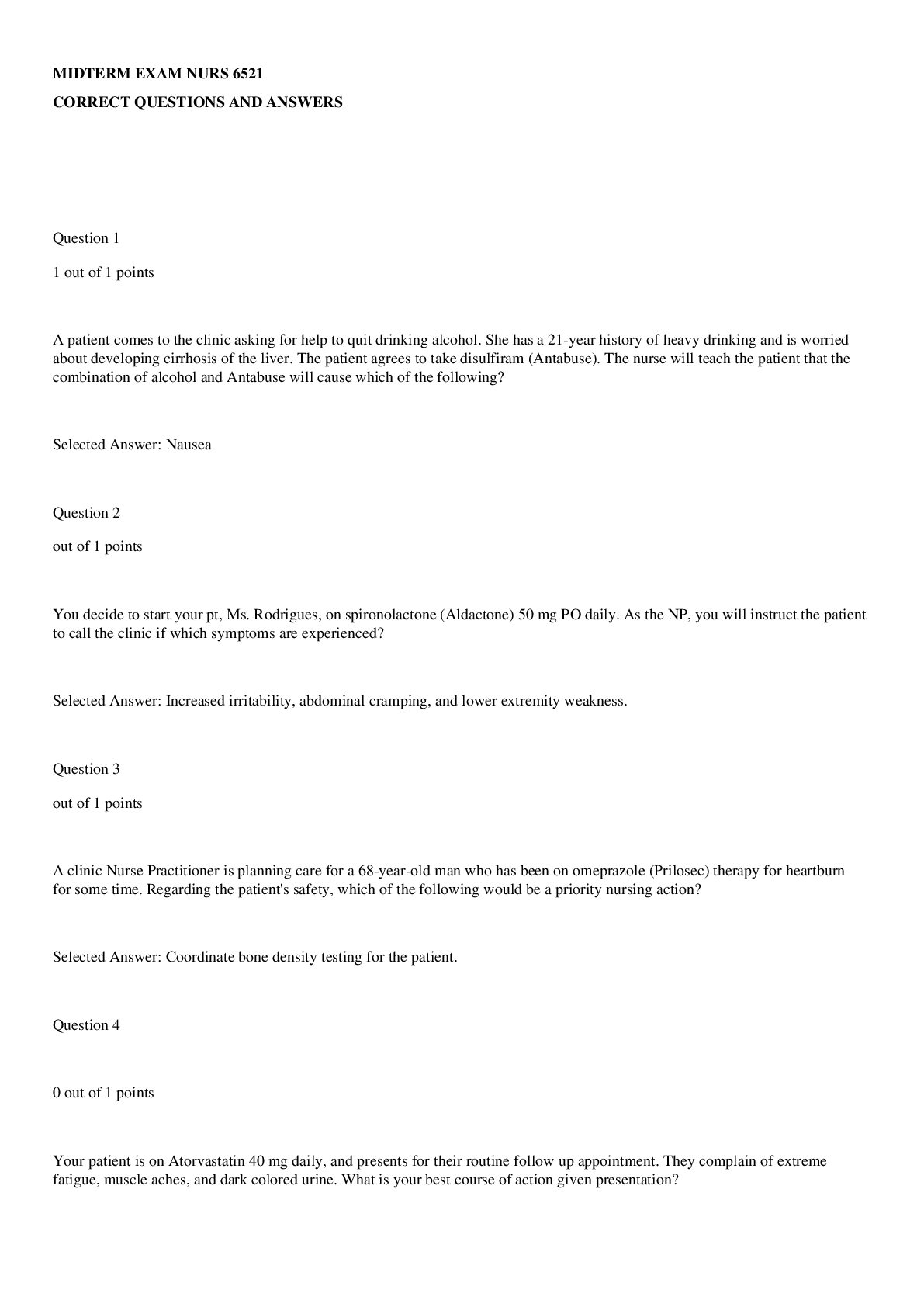
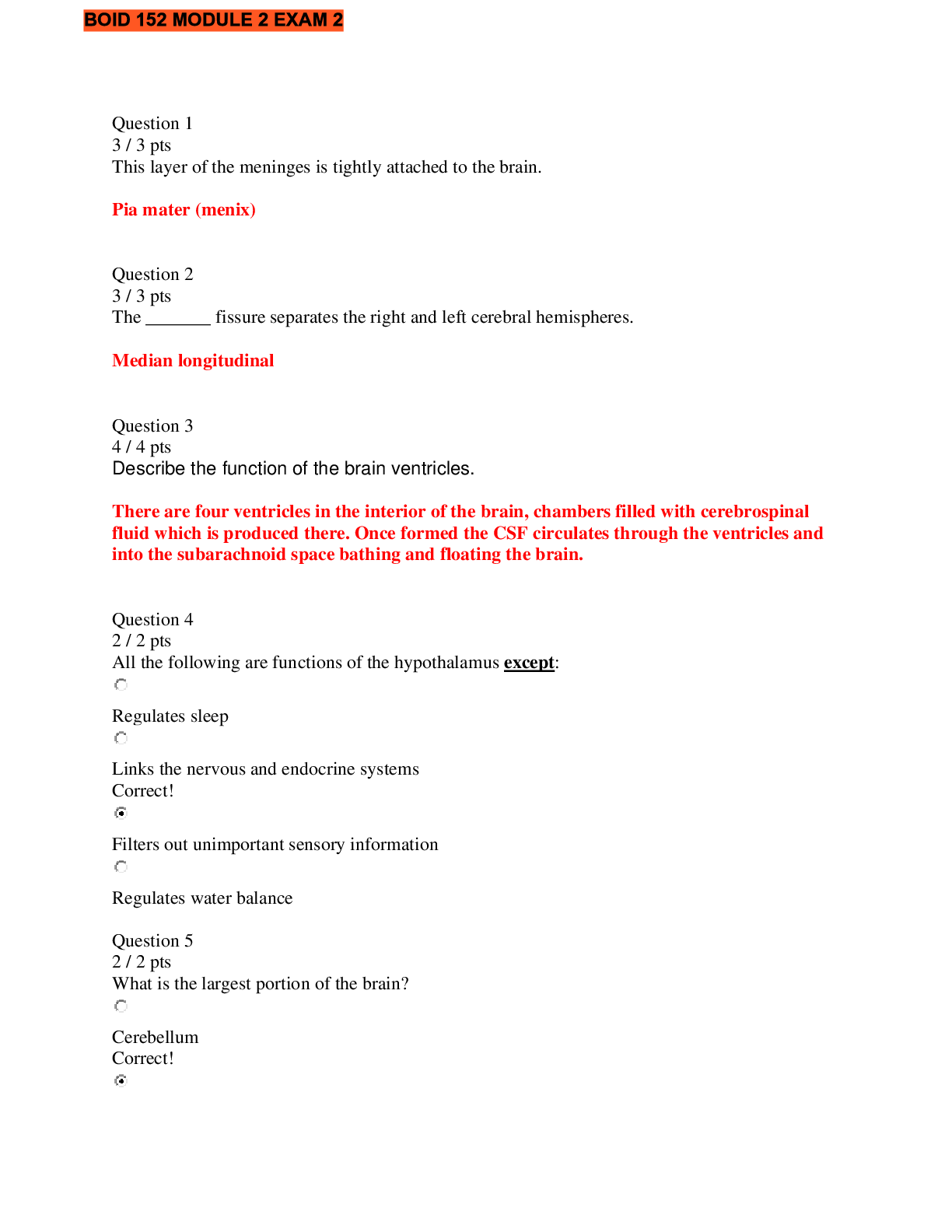
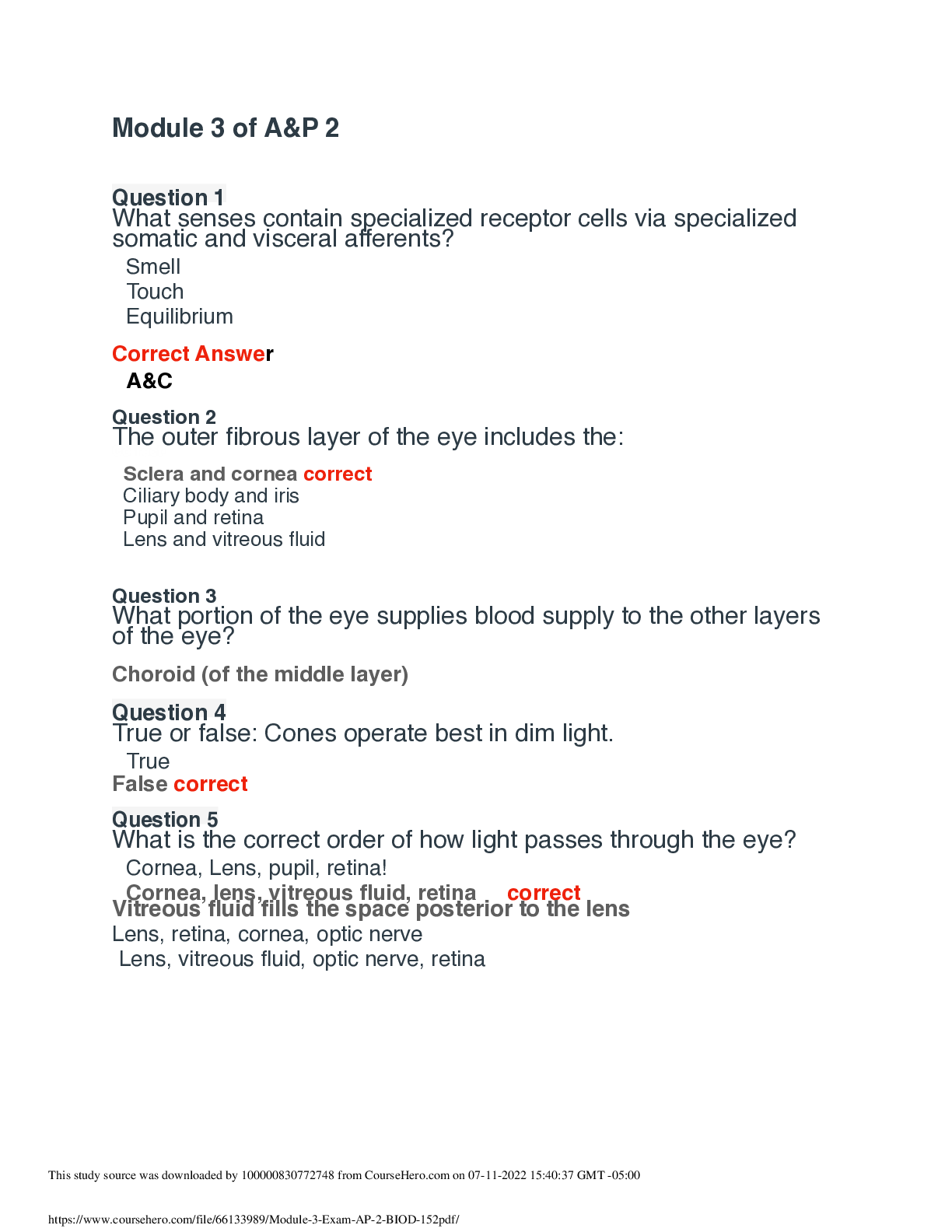


, 100% Correct, Download to Score A.png)
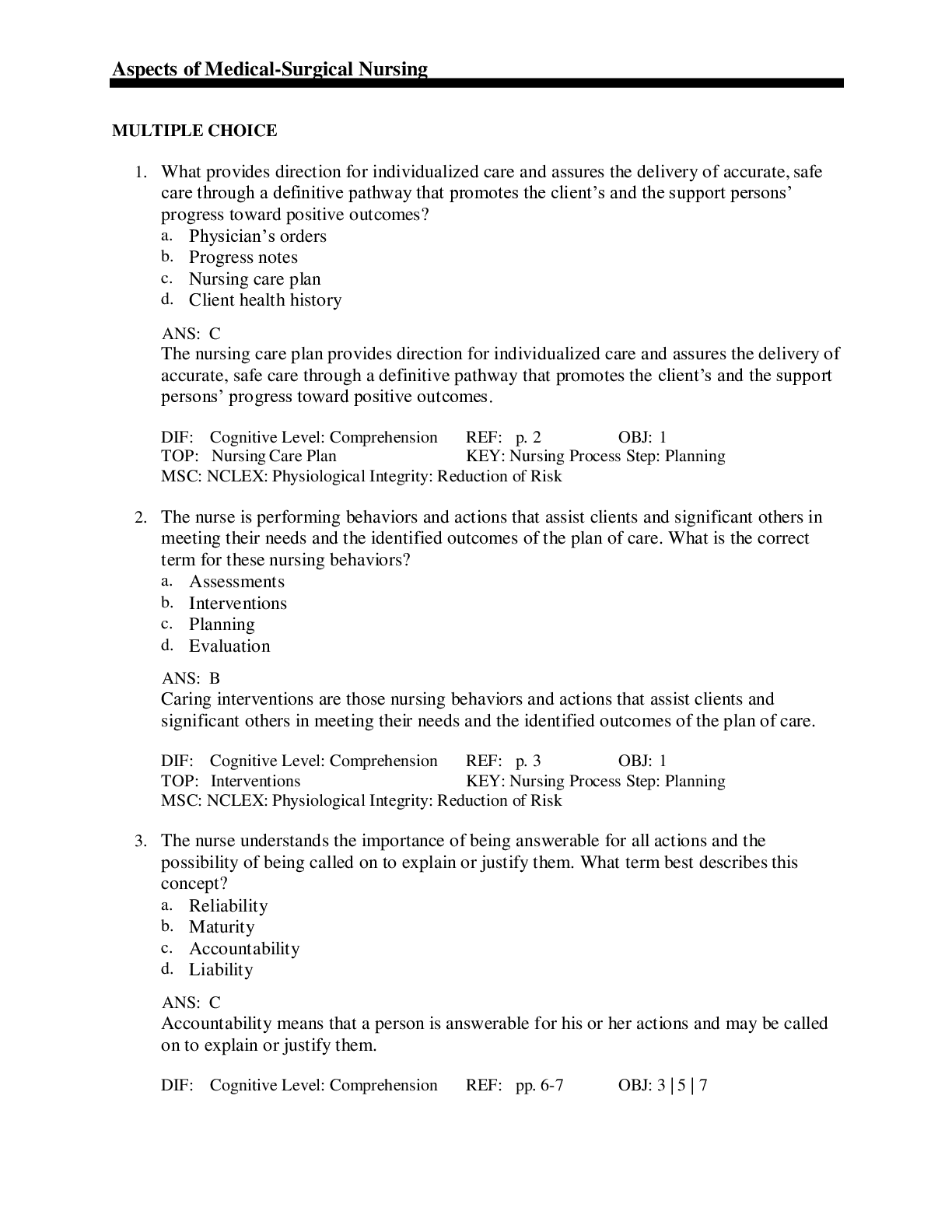
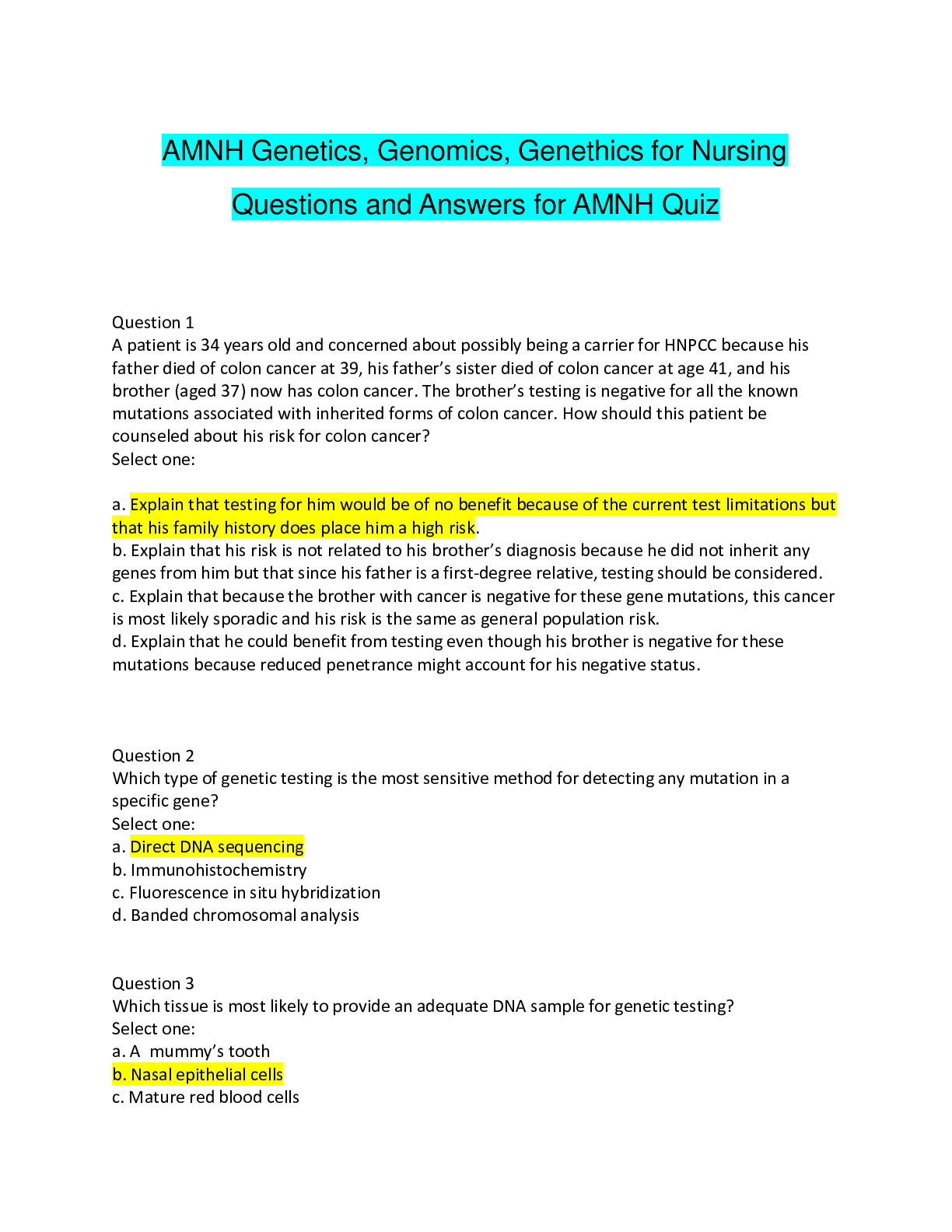
, 100% Correct, Download to Score A.png)
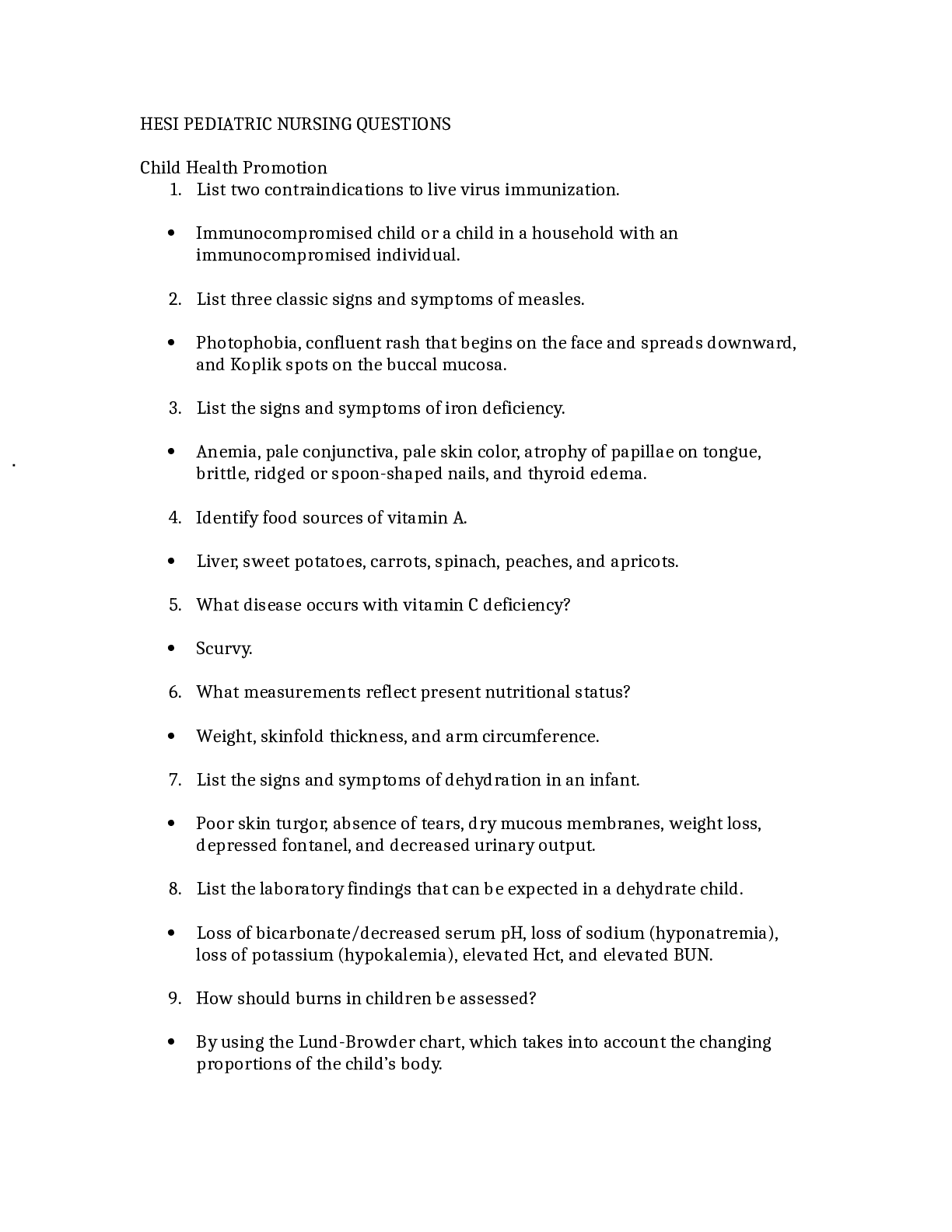
, Correct, Download to Score A.png)
 Foundations of Professional Nursing Questions and Answers with Explanations (STUDY MODE) Questions and Answers (latest Update), Correct, Download to Score A.png)
Download to Score A.png)
 Download to Score A.png)

